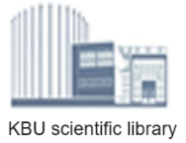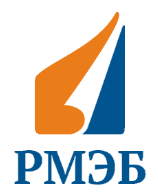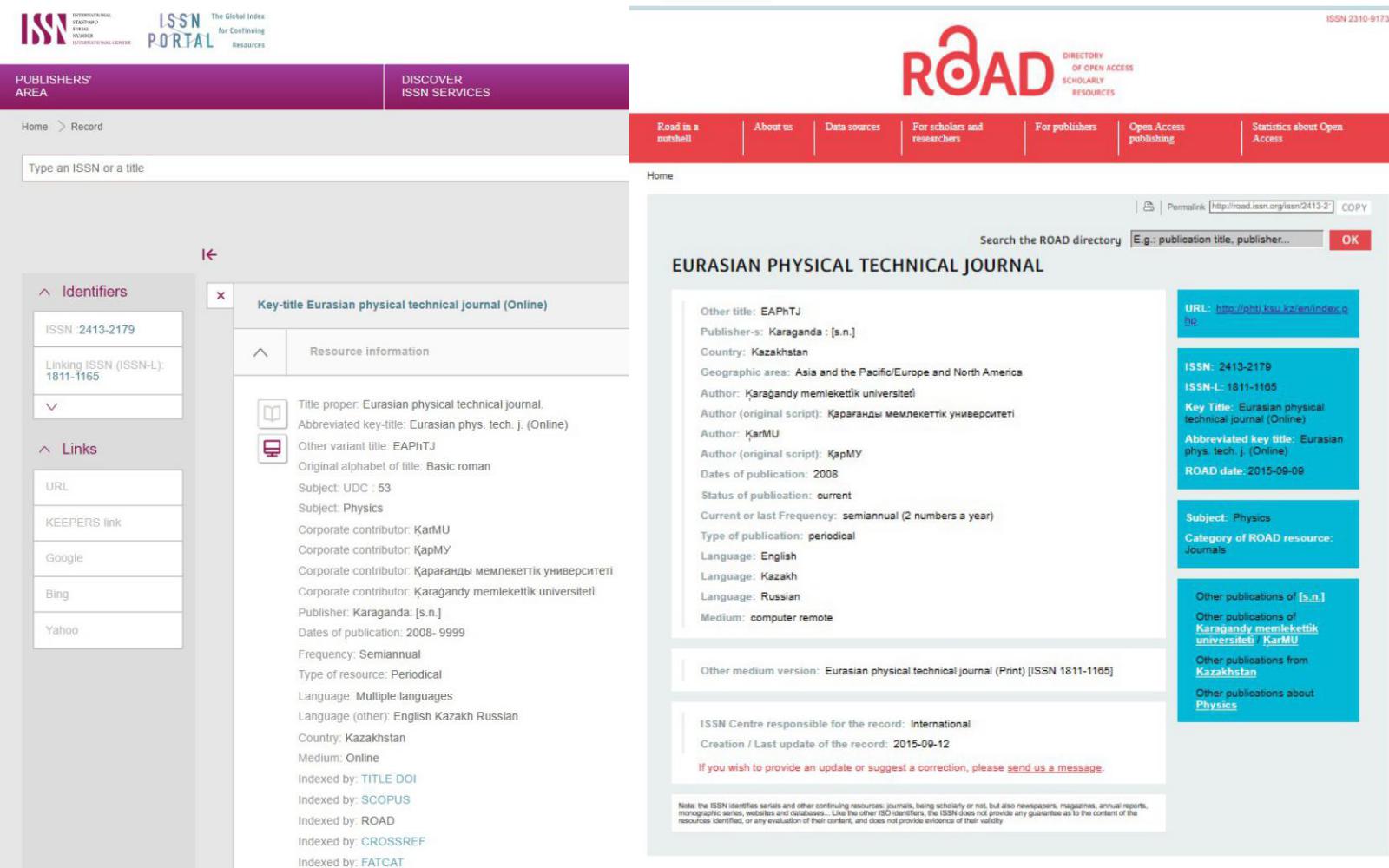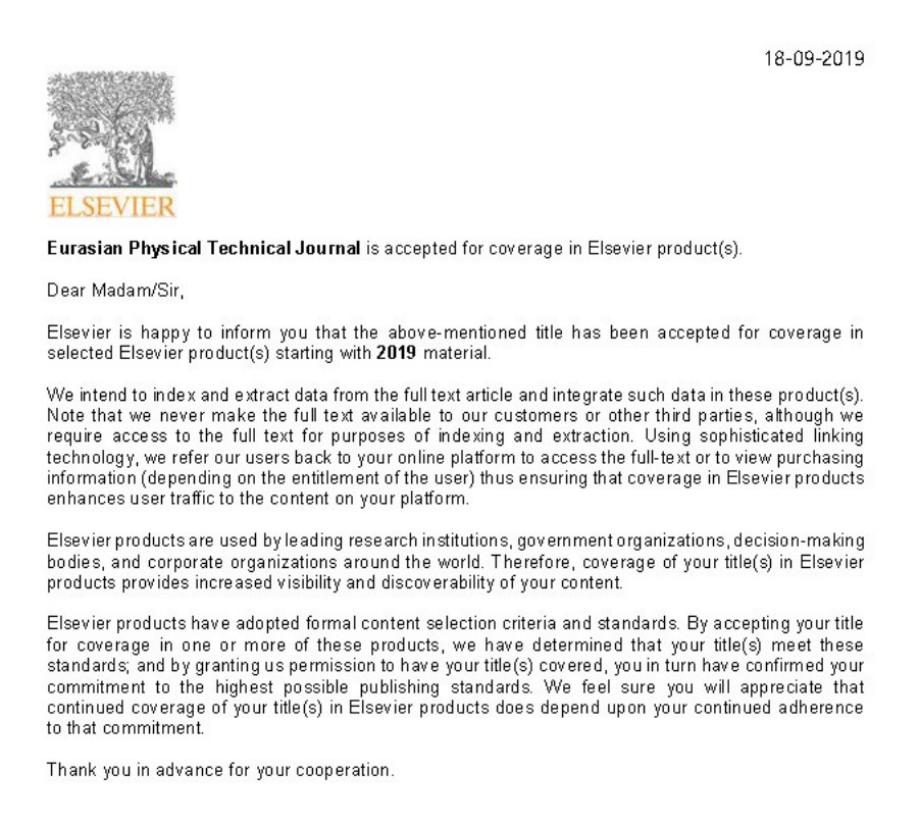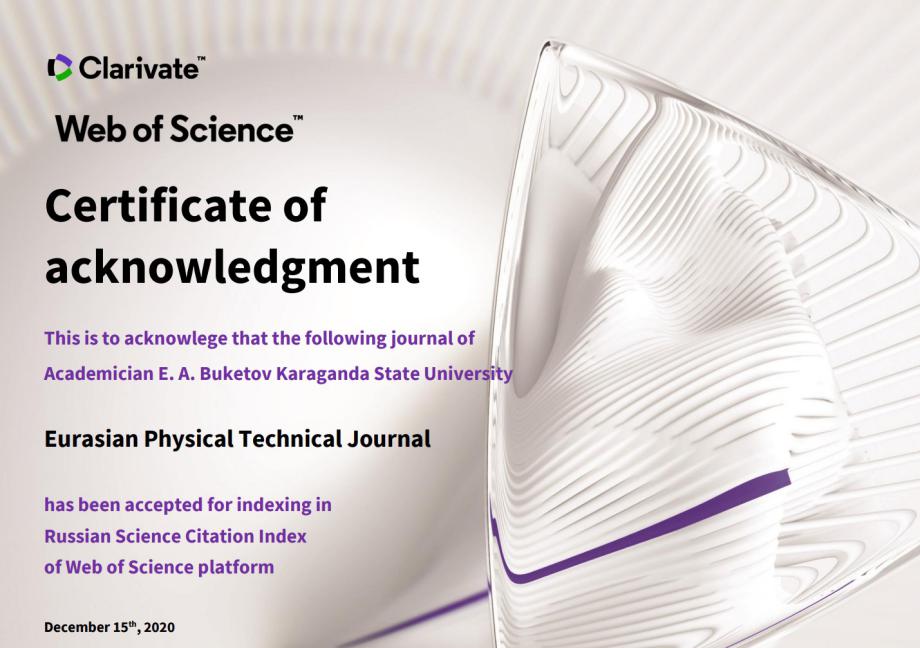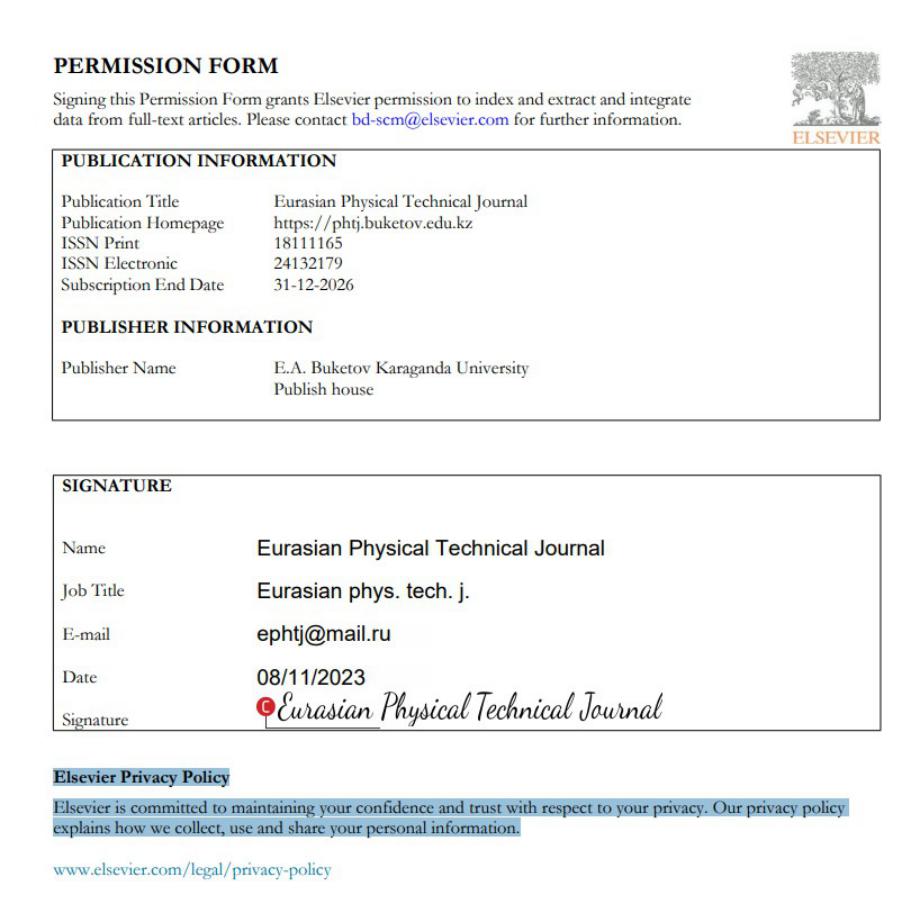PREDICTION OF CORROSION RESISTANCE OF MAGNALIAS
DOI:
https://doi.org/10.31489/2025N2/97-108Keywords:
Corrosion, aluminum-magnesium alloy, magnalium, aluminium, cubic subsystem, halogens, quantum-chemical calculationsAbstract
In the presented work the factors influencing the strength and corrosion rate in seawater of magnalium aluminum-magnesium alloy were considered. It was shown that in unsaturated solid alpha solutions the main form of magnesium in the aluminium structure was the electronic compound Mg2Al4 entering the rhombic subsystem of aluminium cells. The calculation showed that the more aluminium cells contain Mg2Al4 group as a rhombic subsystem, the higher the strength of these alloys. The mechanism of destruction by halogen ions of pure aluminium cells and aluminium cells containing the Mg2Al4 group was determined by the PM3 method. Destruction of both types of cells occurred by the same scenario, through the detachment by halogen ions of the central atom in the upper edge of cells bordering. It was shown that in seawater the corrosion rate of aluminium cells containing Mg2Al4 group was higher than the corrosion rate of pure aluminium cells. A mathematical model has been developed that allows calculating the change in the corrosion rate of magnesium alloys with low magnesium mass fraction (up to 3.5 % magnesium inclusive) in seawater. The model allowed to take into account the change of influence of the mass fraction of the main alloying elements (Mg, Cr, Mn, Zn, Ti, Cu) on the corrosion rate. Change of corrosion rate in seawater of three aluminium-magnesium alloys variants was calculated using this model. These aluminium alloy variants include a magnesium content of 2.6 mass % with higher levels of the alloying elements Cr and Mn.
References
Polmear J.I. (1996) Recent developments in light alloys. J. Mat. Transactions, JIM, 37, 1, 12–31. https://doi.org/10.2320/matertrans1989.37.12 DOI: https://doi.org/10.2320/matertrans1989.37.12
Zhu Q., Abdob M.F., Talamantes-Silva J., Sellars C.M., Linkens D.A., Beynon J.H. (2003) Hybrid modelling of aluminium-magnesium alloys during thermomechanical processing in terms of physically-based, neuro-fuzzy and finite element models. J. Acta Materialia. 51, 17, 5051 – 5062. https://doi.org/10.1016/S1359-6454(03)00353-7 DOI: https://doi.org/10.1016/S1359-6454(03)00353-7
Zhang L., Lin D.-Y., Wang H., Car R., Weinan E. (2019) Active learning of uniformly accurate interatomic potentials for materials simulation. Phys. Rev. Mater., 3, I.2, 023804(9) https://doi.org/10.1103/PhysRev Materials.3.023804 DOI: https://doi.org/10.1103/PhysRevMaterials.3.023804
Erkmen J., Hamamci B., Aydin A. (2024). Examining the corrosion behavior of 6061-T6 al alloy inside seawater with decorative gold- and silver-color coating. Gazi University J. of Science, 37, 2, 953 – 967. https://doi.org/10.35378/ gujs.1219180 DOI: https://doi.org/10.35378/gujs.1219180
Lim M.L.C., Kelly R.G., Scully J.R. (2015) Overview of intergranular corrosion mechanism, phenomenological observations, and modeling of AA5083. J. Mat. Science., 72, .2, 198-220. https://doi.org/10.5006/1818 DOI: https://doi.org/10.5006/1818
Lim J., Jeong G., Seo K., Lim J., Park S., Ju W., Janani G., Lee D., Kim J., Han M., Kim T., Park S., Cho H., Sim U. (2022) Controlled optimization of Mg and Zn in Al alloys for improved corrosion resistance via uniform corrosion. J. Mat. Adv., 3. 4813 – 4823. https://doi.org/10.1039/D1MA01220G DOI: https://doi.org/10.1039/D1MA01220G
Verissimo N.C., Freitas E.S., Cheung N., Garcia A., Osóri W.R. (2017) The effects of Zn segregation and microstructure length scale on the corrosion behavior of a directionally solidified Mg-25 wt.%Zn alloy. J. of Alloys and Compounds, 723, 649 – 660. http://dx.doi.org/10.1016/j.jallcom.2017.06.199 DOI: https://doi.org/10.1016/j.jallcom.2017.06.199
Kim Y., Park J., An B., Lee Y., Yang Ch., Kim J. (2018) Investigation of zirconium effect on the corrosion resistance of aluminum alloy using electrochemical methods and numerical simulation in an acidified synthetic sea salt solution. J. Mat., 11, I.10, 982. https://doi.o1rg/10.3390/ma11101982 DOI: https://doi.org/10.3390/ma11101982
Wolverton C. (2001) Crystal structure and stability of complex precipitate phases in Al-Cu-Mg-(Si) an Al-Zn-Mg alloys. J. Acta Materialia, 49, 16, 3129 – 3142. https://doi.org/10.1016/S1359-6454(01)00229-4 DOI: https://doi.org/10.1016/S1359-6454(01)00229-4
Stewaet J.P. (1989) Optimization of parameters for semiempirical methods 2. 1989. Applications J. Computational Chemistry, 10(2), 221-264. https://doi.org/10.1002/jcc.540100209 DOI: https://doi.org/10.1002/jcc.540100209
Bokiya G.B. (1971) Crystallochemistry, Institute of Radio Engineering and Electronics. USSR Academy of Sciences, Moscow. Available at: https://cat.libnvkz.ru/CGI/irbis64r_14/cgiirbis_64.exe?LNG=&Z21ID=&I21DBN [in Russian]
Kvasov F.I., Fridlyander I.N. (1982) Industrial aluminium alloys: reference book, Metallurgiya, Moscow. Available at: https://i.twirpx.link/file/1686114/ [in Russian]
Shepelevich V.G. (2007) Structure of rapidly solidified foils of AMg6 alloy. Bulletin of P.O. Sukhoi State Technical University, 28, 12 – 16. Available at: http://elib.gstu.by/handle/220612/9923 [in Russian]
Golovkin P.A. (2022) About the factor of quantitative content of intermetallic phases in the nature of destruction of AMg6 alloy open forgings. Technol. Light Alloys, 2, 5 – 19. Available at: https://doi.org/10.24412/0321-4664-2022-2-15-19
GOST 4784-2019. Aluminium and wrought aluminium alloys. Grades (State Standard 4784-2019). Publishing House of Standards, Moscow. Available at: https://files.stroyinf.ru/Data2/1/4293728/4293728395.pdf?ysclid =m2sxpac9co349327183
Kolachev B.A., Livanov V.A., Elagin V.I. (1972) Metallurgy and heat treatment of non-ferrous metals and alloys. Metallurgy, Moscow. Available at: https://techlibrary.ru/b2/2s1p1m1a1y1f1c_2i.2h.,_2m1m1a11j1o [in Russian]
Berdibekov A.T., Khalenov O.S., Zinoviev L.A., Laurynas V.Ch., Gruzin, V.V., Dolya, A.V. (2023) Reason of corrosion of aluminium products in seawater. Eurasian phys. tech. j., 20, 3(45), 20–26. https://doi.org/10.31489/ 2023No3/20-26 DOI: https://doi.org/10.31489/2023No3/20-26
Sinyavskiy V.S., Valkov V.D., Budov G.M. (1979) Corrosion and protection of aluminium alloys. Metallurgiya, Moscow. Available at: https://echemistry.ru/literatura/korroziya/korroziya-i-zashhita-alyuminievyh-splavov.html
Baikenov M.I., Seldyugaev O., Guchenko S.A., Afanasyev D.A. (2024) Reason of pitting corrosion of martensitic steel in seawater. Eurasian phys. tech. j., 21, 1(47), 38–48. https://doi.org/10.31489/2024No1/38-48 DOI: https://doi.org/10.31489/2024No1/38-48
Song Ch.-R., Dong B.-X., Zhang S.-Y., Yang H.-Y., Liu L., Kang J., Meng J., Luo Ch.-J., Wang Ch.-G., Cao K., Qiao J., Shu Sh.-L., Zhu M., Qiu F., Jiang Q.-Ch. (2024) Recent progress of Al–Mg alloys: Forming and preparation process, microstructure manipulation and application. J. of Materials Research and Technology, 31, 3255 - 3286. https://doi.org/10.1016/j.jmrt.2024.07.051 DOI: https://doi.org/10.1016/j.jmrt.2024.07.051
Shakhnazarov T.A., Takhtarova Yu.A. (2008) Russian patent. Method of alloying with chrome. Available at: https://patenton.ru/patent/RU2324753C2?ysclid=m4gwqsw68m972534492
Downloads
Published online
How to Cite
Issue
Section
License

This work is licensed under a Creative Commons Attribution-NonCommercial-NoDerivatives 4.0 International License.


